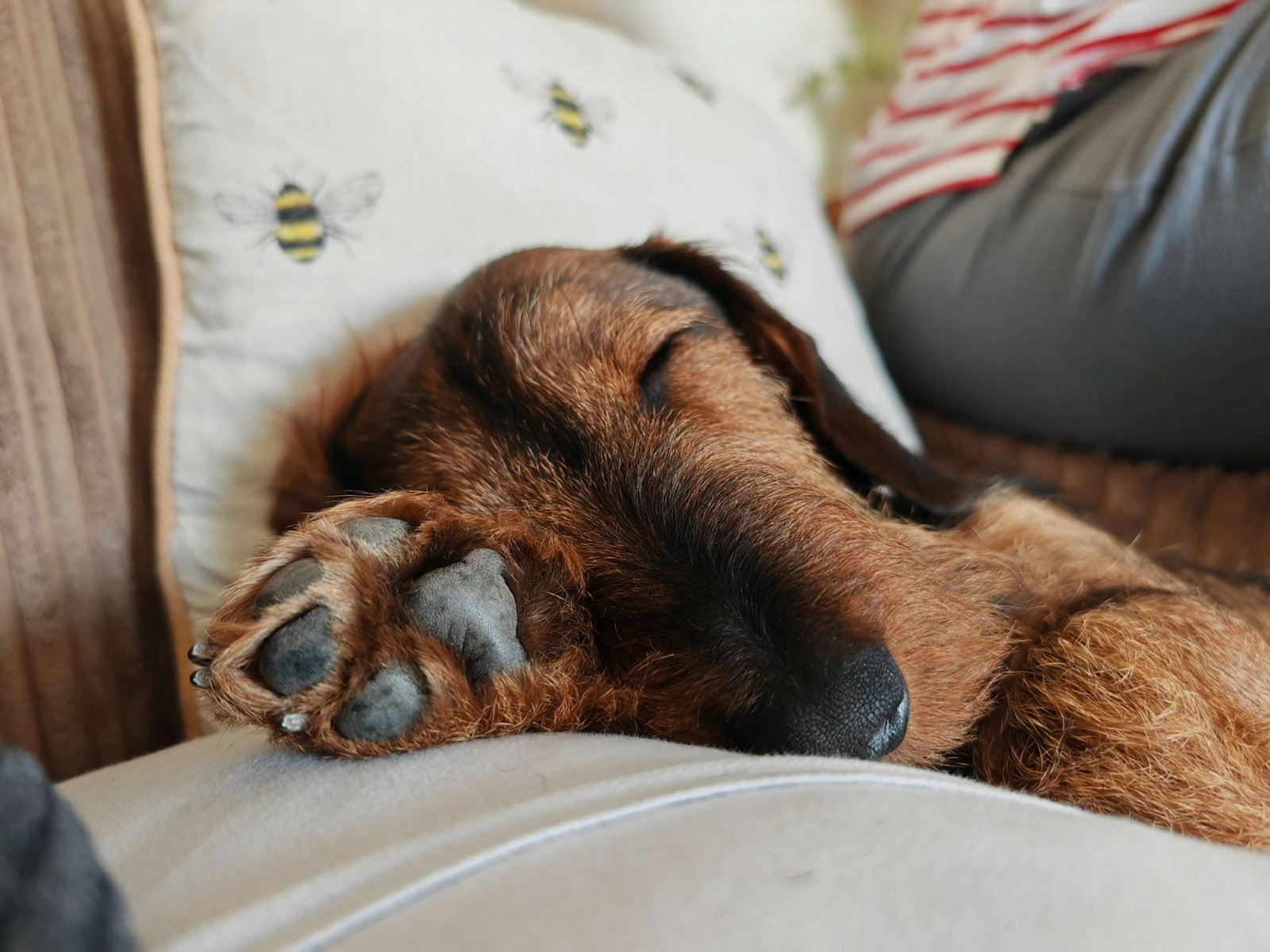How to Bandage a Dog Paw: A Step-by-Step Guide for Pet Owners
When your furry friend injures their paw, it’s natural to feel concerned and want to help immediately. Whether it’s a cut, scrape, or irritation, knowing how to bandage a dog paw is an essential skill every pet owner should have. Properly wrapping your dog’s paw not only protects the injury but also promotes faster healing and prevents further damage. However, bandaging a dog’s paw can be tricky—dogs are active, and their paws are constantly in use. In this blog post, we’ll walk you through everything you need to know about how to bandage a dog paw safely and effectively. From gathering supplies to step-by-step instructions, we’ll ensure you’re prepared to care for your dog’s paws like a pro.
Essential Supplies for Bandaging a Dog Paw
Before you begin bandaging your dog’s paw, it’s important to gather all the necessary supplies. Having everything ready will make the process smoother and less stressful for both you and your pet. Here’s what you’ll need:
Clean Cloth or Gauze : To clean and cover any wounds before applying the bandage.
Antiseptic Solution : Use a pet-safe antiseptic to clean the injured area and prevent infection.
Self-Adhesive Bandage Wrap : This type of wrap sticks to itself, not your dog’s fur, making it easier to apply and remove.
Cotton Padding : Provides cushioning and absorbs moisture to keep the wound dry and protected.
Scissors : Blunt-tip scissors are ideal for cutting bandages without risking injury to your dog.
Having these supplies on hand ensures you’re prepared to address your dog’s injury promptly and effectively, reducing the risk of complications.
Step-by-Step Guide to Bandaging a Dog Paw
Bandaging a dog paw requires patience and precision. Follow these steps to ensure the bandage is applied correctly and comfortably for your pet:
Clean the Wound : Gently wash the injured area with an antiseptic solution and pat it dry with a clean cloth.
Apply Padding : Place a layer of cotton padding over the wound to protect it and absorb any discharge.
Wrap the Paw : Start by securing the bandage around the paw, ensuring it’s snug but not too tight to restrict blood flow.
Cover the Leg : Extend the bandage slightly up the leg to hold it in place and prevent slipping during movement.
Secure the Bandage : Use self-adhesive wrap to finish the bandage, ensuring it stays in place without sticking to your dog’s fur.
By following these steps carefully, you can provide your dog with a secure and comfortable bandage that promotes healing while allowing them to move freely.
Check this guide 👉Top 5 Best Dog Bandages for Ultimate Wound Protection!

Step | Purpose |
|---|---|
Clean the Wound | Prevents infection and removes debris. |
Apply Padding | Protects the wound and absorbs moisture. |
Wrap the Paw | Secures the bandage and stabilizes the paw. |
Cover the Leg | Prevents the bandage from slipping off. |
Secure the Bandage | Ensures the bandage stays in place safely. |
Tips for Keeping Your Dog Calm During Bandaging
Bandaging a dog paw can be challenging if your pet is anxious or resistant. These tips will help you keep your dog calm and cooperative during the process:
Choose a Quiet Space : Work in a quiet, familiar area to minimize distractions and stress for your dog.
Use Positive Reinforcement : Reward your dog with treats or praise to encourage calm behavior.
Stay Calm Yourself : Dogs can sense your emotions, so maintaining a calm demeanor helps reassure them.
Practice Beforehand : Familiarize your dog with the process by practicing gentle paw handling regularly.
Take Breaks if Needed : If your dog becomes too restless, pause and resume when they’re more relaxed.
By using these strategies, you can create a positive experience for your dog, making future bandaging sessions easier and less stressful.
Common Mistakes to Avoid When Bandaging a Dog Paw
Even with the best intentions, mistakes can happen when bandaging a dog’s paw. Avoiding these common errors will help ensure your dog’s comfort and safety:
Wrapping Too Tightly : A bandage that’s too tight can restrict blood flow and cause discomfort or swelling.
Skipping Cleaning : Failing to clean the wound properly increases the risk of infection.
Using Unsafe Materials : Avoid materials like duct tape or human bandages that can harm your dog’s skin or fur.
Not Checking Regularly : Leaving the bandage on for too long without checking can lead to irritation or infection.
Ignoring Signs of Discomfort : If your dog chews or licks the bandage excessively, it may indicate an issue that needs attention.
By avoiding these mistakes, you can ensure your dog’s paw heals properly and remains protected throughout the recovery process.
Signs Your Dog’s Paw Bandage Needs Attention
Even after carefully applying a bandage, it’s important to monitor your dog’s paw for any signs of trouble. Addressing issues early can prevent complications and ensure proper healing. Here are some warning signs to watch for:
Swelling Around the Bandage : This may indicate that the bandage is too tight or that an infection is developing.
Foul Odor : A strong smell coming from the bandage could signal an infection or discharge.
Excessive Licking or Chewing : If your dog is obsessively licking or chewing the bandage, it may be uncomfortable or irritating their skin.
Bandage Slipping or Loosening : A loose bandage can expose the wound and increase the risk of further injury.
Changes in Behavior : Lethargy, limping, or reluctance to walk may indicate pain or discomfort under the bandage.
By staying vigilant and addressing these signs promptly, you can help your dog recover smoothly and avoid unnecessary setbacks.
How to Prevent Future Paw Injuries in Dogs
Prevention is always better than cure when it comes to your dog’s paws. Taking proactive steps can reduce the likelihood of injuries that require bandaging. Here are some practical tips:
Regular Paw Checks : Inspect your dog’s paws after walks or outdoor play to remove debris like thorns or sharp objects.
Use Protective Booties : Consider using dog booties during hikes, walks on hot pavement, or in icy conditions to shield their paws.
Trim Nails Regularly : Overgrown nails can affect your dog’s gait and lead to paw strain or injury.
Avoid Hot Surfaces : Be mindful of walking your dog on hot asphalt or sand, which can burn their paw pads.
Moisturize Paw Pads : Use pet-safe paw balm to keep their pads soft and prevent cracking or dryness.
By incorporating these habits into your routine, you can minimize the risk of paw injuries and keep your dog’s paws healthy and strong.
When to Seek Professional Help for a Dog’s Paw Injury
While minor paw injuries can often be managed at home, some situations require professional veterinary care. Knowing when to seek help ensures your dog receives the appropriate treatment. Here are scenarios where you should consult a vet:
Deep Cuts or Punctures : Wounds that penetrate deeply into the paw may require stitches or antibiotics.
Foreign Objects Embedded in the Paw : If something like a shard of glass or thorn is stuck, a vet should safely remove it.
Persistent Bleeding : If the bleeding doesn’t stop after 10-15 minutes of pressure, it’s time to see a professional.
Signs of Infection : Redness, swelling, pus, or a fever-like response indicates the need for medical attention.
Lameness or Severe Pain : If your dog is unable to put weight on the injured paw, a vet can diagnose underlying issues.
Recognizing these situations and seeking timely help can make all the difference in your dog’s recovery and long-term health.
Frequently Asked Questions About Bandaging a Dog Paw
How often should I change my dog’s paw bandage?
Change the bandage every 1-2 days or sooner if it becomes wet, dirty, or loose.
What should I do if my dog chews the bandage?
Consider using an Elizabethan collar (cone) to prevent chewing and protect the bandage.
Can I use regular tape to secure the bandage?
No, regular tape can stick to your dog’s fur and cause discomfort. Use self-adhesive wrap instead.
How do I know if the bandage is too tight?
Check for signs like swelling, cold paws, or difficulty walking, which indicate restricted blood flow.
When should I take my dog to the vet for a paw injury?
Consult a vet if the wound is deep, won’t stop bleeding, shows signs of infection, or doesn’t improve within a few days.
Empowering Yourself to Care for Your Dog’s Paws
Knowing how to bandage a dog paw is an invaluable skill that can make a significant difference in your pet’s recovery. By understanding the steps, gathering the right supplies, and avoiding common mistakes, you can provide your dog with the care they need to heal quickly and comfortably. Remember, your dog relies on their paws for mobility and exploration, so keeping them healthy is essential for their overall well-being. With patience, practice, and a little extra love, you’ll be equipped to handle paw injuries like a pro and ensure your furry friend stays happy and active.
Why Is My Cats Second Eyelid Showing? Best 7 Expert Tips! Understand causes, health signs, and how to respond when your cat’s third eyelid becomes visible.
How Do I Know If My Cat Died Peacefully? Best 7 Expert Tips! Discover the quiet signs of a peaceful feline passing and find comfort in their final moments.
Cat Allergy Eyes: Best 7 Expert Tips! Discover why your eyes react to cats and learn proven strategies for relief—without giving up your feline friend.
Why Do Abyssinian Cat Colors Matter? Best 7 Expert Tips! Discover the genetics, rare hues, and care secrets behind Abyssinian coat colors for a healthier, happier cat.





